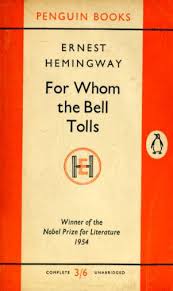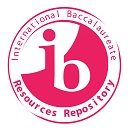Writing for a Reader: A Rewriting Activity
 Here is a simple activity that can help your students write with greater brevity, and with sensitivity for genre and the intended reader.
Here is a simple activity that can help your students write with greater brevity, and with sensitivity for genre and the intended reader.
As teachers, we certainly want students, most frequently, to write with concision and precision, and to include only relevant detail. Whilst this is true of many kinds of written text – certainly academic essays – students need to write with an understanding of the text type being constructed, and of the intended reader – the receiver – of their writing.
In this activity, we have taken a short biographical text from the Penguin edition of Ernest Hemingway’s novel For Whom the Bell Tolls. We have added extra, superfluous detail, and it is the task of students to ‘reduce’ the text to its original (initially unseen) form.
The task is not as easy as it may first appear, and it is an activity that can be adapted for a range of text types. The activity is a lot like précis writing, or summary writing, a common enough, and frequently effective task for students. However, it is a little more complex; it is not divorced from the genre or text type, and it encourages students to carefully consider the intended reader or narratee. In a sequence of teaching, the activity could be situated at the beginning, as a formative pre-test, or it could occur towards the end, following a period of reading and deconstructing a number of similar texts.
In doing the activity, introduce the extended text first, and only reveal the original once students have revised and edited the extended text. A subsequent discussion of students' choices is of greater importance than whether students were 'right' or 'wrong'.
Expanded Text:
Ernest Miller Hemingway was born indoors in 1899 at Oak Park, a highly respectable suburb of Chicago, a large city in the USA, where his father, a keen sportsman, was a doctor. He was the second of six children. For short periods each year, the family spent holidays in a lakeside hunting lodge in Michigan, near Indian settlements. They spent the time there swimming and walking, and when the holidays were over they used to return home. The young Ernest, who grow older as the years passed by, attended a local school, and although energetic and successful in all school activities, he twice ran away from home, though he returned on both occasions. When he left school, he joined the Kansas City Star as a cub reporter in 1917. At that time, there was a war raging in Europe, and the next year he volunteered as an ambulance driver on the Italian front and was badly wounded during an attack by the enemy army. This prevented him from continuing his work. Returning to America he began to write features for a newspaper called the Toronto Star Weekly in 1919, and in 1921 was married of his own free will to a woman he had met and fallen in love with earlier. That year he came to Europe by boat as a roving correspondent and covered several large conferences. He ate food every day and slept at night.
Original Text: A Biographical Sketch of Ernest Hemingway from For Whom the Bell Tolls, Penguin Edition
Ernest Miller Hemingway was born in 1899 at Oak Park, a highly respectable suburb of Chicago, where his father, a keen sportsman, was a doctor. He was the second of six children. The family spent holidays in a lakeside hunting lodge in Michigan, near Indian settlements. Although energetic and successful in all school activities, he twice ran away from home before joining the Kansas City Star as a cub reporter in 1917. Next year he volunteered as an ambulance driver on the Italian front and was badly wounded. Returning to America he began to write features for a newspaper called the Toronto Star Weekly in 1919 and was married in 1921. That year he came to Europe as a roving correspondent and covered several large conferences.
 IB Docs (2) Team
IB Docs (2) Team